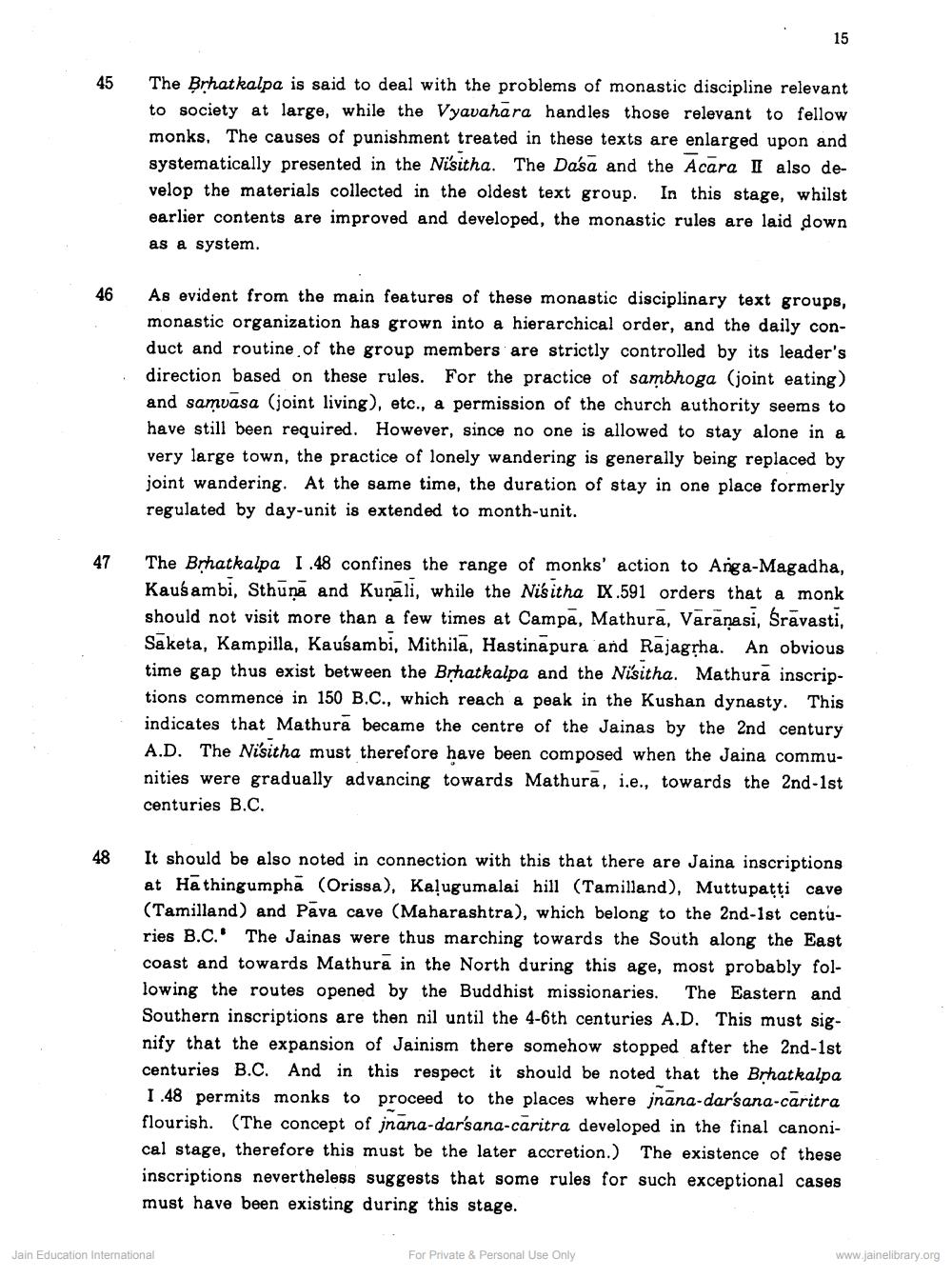________________
15
The Brhatkalpa is said to deal with the problems of monastic discipline relevant to society at large, while the Vyavahara handles those relevant to fellow monks. The causes of punishment treated in these texts are enlarged upon and systematically presented in the Nisitha. The Dasa and the Acara I also develop the materials collected in the oldest text group. In this stage, whilst earlier contents are improved and developed, the monastic rules are laid down as a system.
As evident from the main features of these monastic disciplinary text groups, monastic organization has grown into a hierarchical order, and the daily conduct and routine of the group members are strictly controlled by its leader's direction based on these rules. For the practice of sambhoga (joint eating) and samvasa (joint living), etc., a permission of the church authority seems to have still been required. However, since no one is allowed to stay alone in a very large town, the practice of lonely wandering is generally being replaced by joint wandering. At the same time, the duration of stay in one place formerly regulated by day-unit is extended to month-unit.
47
The Brhatkalpa 1.48 confines the range of monks' action to Ariga-Magadha, Kausambi, Sthuna and Kunali, while the Nisitha X.591 orders that a monk should not visit more than a few times at Campa, Mathura, Varanasi, Sravasti, Saketa, Kampilla, Kauśambi, Mithila, Hastinapura and Rajagrha. An obvious time gap thus exist between the Brhatkalpa and the Nisitha. Mathura inscriptions commence in 150 B.C., which reach a peak in the Kushan dynasty. This indicates that Mathura became the centre of the Jainas by the 2nd century A.D. The Ni'sitha must therefore have been composed when the Jaina communities were gradually advancing towards Mathura, i.e., towards the 2nd-1st centuries B.C.
It should be also noted in connection with this that there are Jaina inscriptions at Ha thingumpha (Orissa), Kalugumalai hill (Tamilland), Muttupatti cave (Tamilland) and Pava cave (Maharashtra), which belong to the 2nd-1st centuries B.C. The Jainas were thus marching towards the South along the East coast and towards Mathura in the North during this age, most probably following the routes opened by the Buddhist missionaries. The Eastern and Southern inscriptions are then nil until the 4-6th centuries A.D. This must signify that the expansion of Jainism there somehow stopped after the 2nd-1st centuries B.C. And in this respect it should be noted that the Brhatkalpa
1.48 permits monks to proceed to the places where jnana-darsana-caritra flourish. (The concept of jnana-darsana-caritra developed in the final canonical stage, therefore this must be the later accretion.) The existence of these inscriptions nevertheless suggests that some rules for such exceptional cases must have been existing during this stage.
Jain Education International
For Private & Personal Use Only
www.jainelibrary.org




